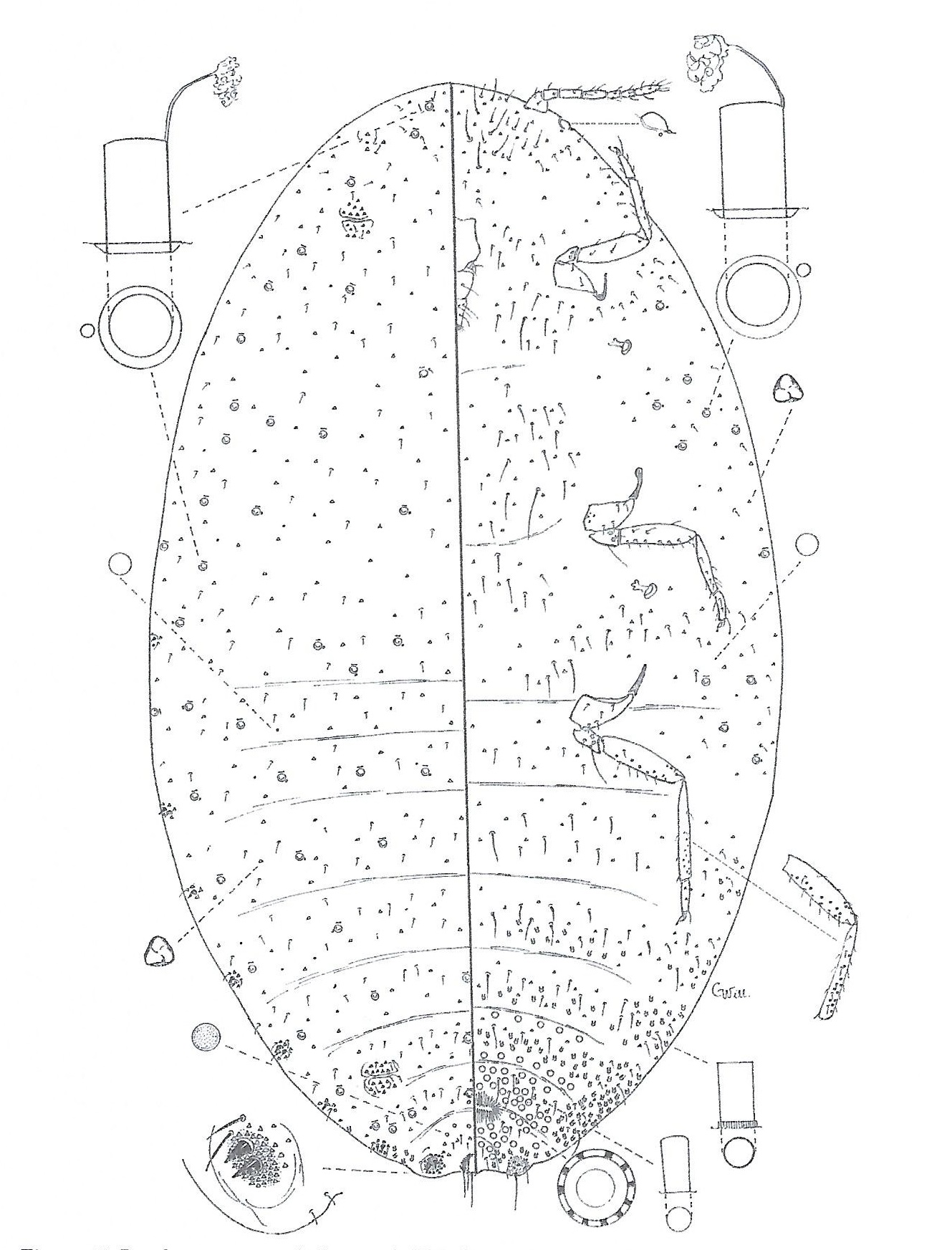Valid Names Results
Pseudococcus cuyoensis Granara de Willink, 2018 (Pseudococcidae: Pseudococcus)Nomenclatural History
- Pseudococcus cuyoensis Granara de Willink 2018: 24. Type data: ARGENTINA: La Rioja, Ruta 60, 10/?/2002, on bromeliacea, by M.C.G.Willink.. Holotype, female, by original designation Type depository: Tucuman: Fundacion e Instituto Miguel Lillo, Universidade Nactional de Tucuman, Argentina; accepted valid name Illustr.
Common Names
Ecological Associates
Hosts:
Families: 1 | Genera: 1
- Bromeliaceae
- Bromeliaceae | GranarGo2018
Geographic Distribution
Countries: 1
- Argentina | GranarGo2018
Keys
- GranarGo2018: pp.10-14 ( Adult (F) ) [Central & South American Pseudococcus]
Remarks
- Systematics: Due to the limited number of cerari and the absence of a circulus, P. cuyaensis differs from the other known species in the region. It resembles P. acirculus, from the USA, due to the absence of a circulus, but they also differ because P. cuyaensis has 1) 5-8 pairs of cerari (P. acirculus has 15 well developed pairs); 2) ducts with oral collars are scarce, found only at the posterior border of the dorsal abdomen (numerous ducts over the entire surface of the dorsum in P. acirculus), and 3) numerous oral rim ducts on the cephalothorax and dorsal abdomen (only on the dorsal thorax in P. acirculus) (Granara de Willink & Gonzalez, 2018)
- Structure: Translucent pores on the femur and tibia; small discoidal pores (1-2) on membranous surface at the edge of the eye; eight cerarii, reduced or absent on cephalothorax, present on abdomen although C10 absent and C11, C12 and C15 reduced; absent circulus; antennas with 7-8 segments; tubular ducts with dorsal oral rim; two frontal and one submarginal anterior to the ostiole; thorax with 32 ducts and abdomen with 35 in longitudinal lines; 10-11 ventral ducts, from the prothorax until segment II of the abdomen. (Granara de Willink & Gonzalez, 2018)
- General Remarks: Detailed description and illustration in Granara de Willink & Gonzalez, 2018.
Illustrations
Citations
- GranarGo2018: diagnosis, distribution, host, illustration, key, taxonomy, 5-14, 24-25



